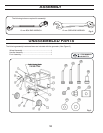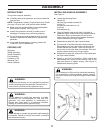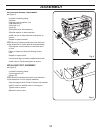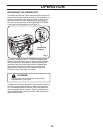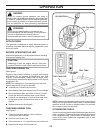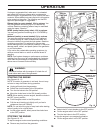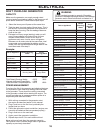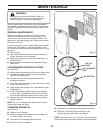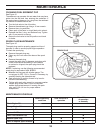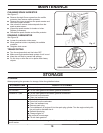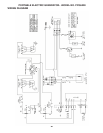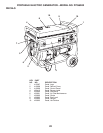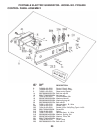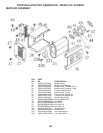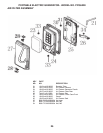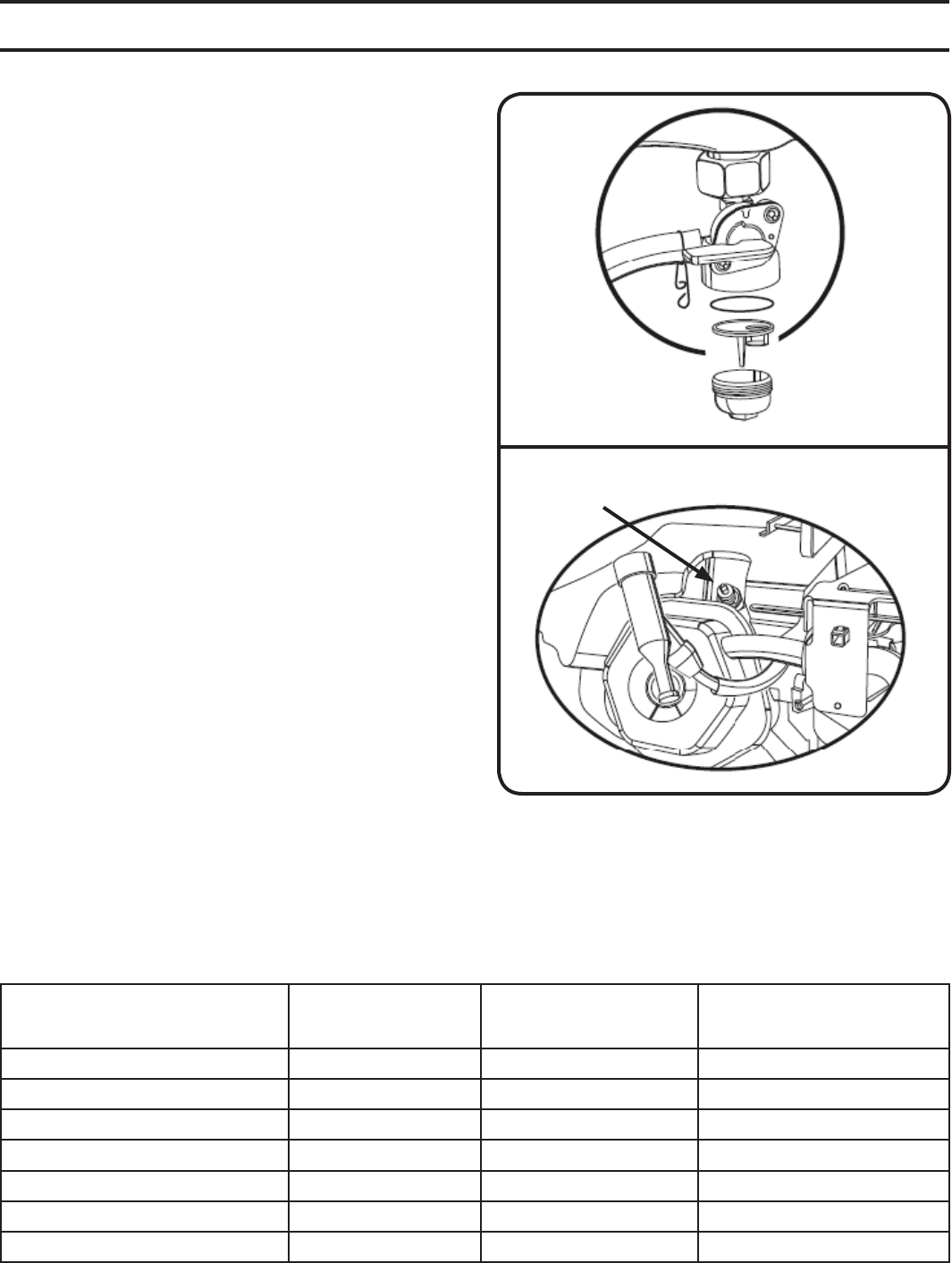
18
MAINTENANCE
CLEANING FUEL SEDIMENT CUP
See Figure 15.
The sediment cup prevents dirt and water that may have
gotten into the fuel tank from entering the carburetor. If
the engine has not been run for a long time, the sediment
cup should be cleaned before use.
■ Turn the fuel valve to the off position.
■ Remove the sediment cup using a 10 mm wrench.
■ Remove the o-ring and filter.
■ Clean each of the parts in a high flash-point solvent.
■ Reinstall the filter, o-ring, and sediment cup. Tighten
with 10 mm wrench to secure.
■ Return the fuel valve to the ON position and check
for leaks.
SPARK PLUG MAINTENANCE
See Figure 16.
The spark plug must be properly gapped and free of
deposits in order to ensure proper engine operation.
To check the spark plug:
■ Remove the spark plug cap.
■ Clean any dirt from around the base of the spark
plug.
■ Remove the spark plug.
■ Inspect the spark plug for damage, and clean with
a wire brush before reinstalling. If the insulator
is cracked or chipped, the spark plug should be
replaced.
NOTE: If replacing, use the following recommended
spark plugs or equivalent: NGK, BP6ES.
■ Measure the plug gap with a feeler gauge. The
correct gap is .028 - .031 in. Correct, if necessary, by
carefully bending the side electrode.
■ Seat spark plug in position; thread in by hand to
prevent cross-threading.
■ Tighten with spark plug wrench to compress washer.
If spark plug is new, use 1/2 turn to compress
washer appropriate amount. If reusing old spark
plug, use 1/8 to 1/4 turn for proper washer
compression.
Before operating
each time
After 25 hours of
operation
After 100 hours
of operation
or annually
Check Engine Oil
■
Change Engine Oil
■■
Check Air Filters
■
Replace Air Filters
■
Clean Fuel Sediment Cup
■
Replace Spark Plug
■■
Clean or Replace Spark Arrester
■■
MAINTENANCE SCHEDULE
Fig. 16
Fig. 15
SPARK PLUG



